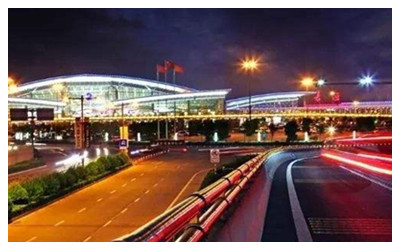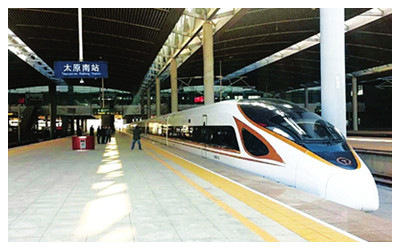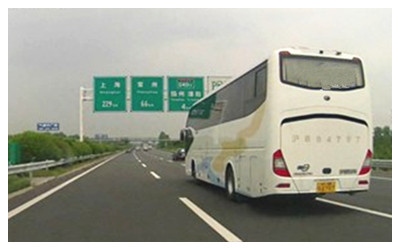- Home
- China Provinces Guide > Shanxi > Shanxi Travel Guide >
Shanxi Transportation
Since 1949, Shanxi has made great strides in transport and communications. Now it has basically established a solid traffic network of crisscrossing and radiating railways, highways and airlines. Therefore, no matter from which city in China, you can now use convenient transportation to reach Taiyuan, Pingyao, Datong , and the other tourist cities in Shanxi Province.
By Air
Shanxi has rapid development in civil aviation and air transportation. By the end of 2019, North China's Shanxi province had seven civil airports operating 242 civil airline routes. The volume of passenger transport by air reached 20.37 million people in 2019, representing year-on-year growth of 10.5 percent. The cargo transport volume of local civil airports amounted to 67,000 metric tons in 2019, up 9.6 percent year on year. The seven

airports in Shanxi are listed as below:
- Linfen Qiaoli Airport
- Yuncheng Guangong Airport
- Luliang Dawu Airport
- Xinzhou Wutaishan Airport
- Changzhi Wangcun Airport
- Datong Yungang Airport
- Taiyuan Wusu Airport
The provincial capital Taiyuan has got forty one airlines to and fro more than thirty large cities in the country. In 1993, Taiyuan Wusu Airport was opened to traffic and became a national first class airport with the approval of the State Department.
There are 20 airlines operating 81 air routes to domestic cities, 8 to international cities and 5 to regional cities. The flights to Beijing are especially convenient. They are given special check-in counters, security check passages, waiting areas and boarding gates as well as priority in departing.
Taiyuan Wusu Airport also provides regular flights to Hong Kong and chartered airplanes to Japan, South Korea, Thailand and Singapore. Besides, there are international flights to London, New York, San Francisco, Paris and Frankfurt via Beijing and flights to Singapore, Kuala Lumpur and Penang via Guangzhou.
By Train
The Shanxi railway takes the north and south Tong-Pu railway lines and the Shi-Tai railway line as the trunk and develops into a railway transport network covering nine major railway lines of Shi-Tai, Jing-Yuan, Jing-Bao, Tai-Jiao, Han-Chang, Hou-Yue, Da-Qin, and north and south Tong-Pu as well as three main branch lines and more than four hundred special lines, which are connected respectively with the national railway main arteries of Jing-Bao Line, Jing-Guang Line and Long-Hai Line and lead to all the large cities of China and seashore wharfs such

as Qinhuangdao, Tianjin and Shijiusuo.
- Taiyuan Railway Station
- Pingyao Railway Station
- Datong Railway Station
Shanxi province is a vital rail hub in North China, with a high-speed railway network currently under construction.There are many north-south and east-west railways running across the province, which connect most of the big and medium-sized cities in North China. These include the Shijiazhuang-Taiyuan Railway, Beijing-Baotou Railway and Datong-Qinhuangdao Railway, Datong-Zhangjiakou High-speed Railway and the Datong-Xi'an High-speed Railway.
- Taiyuan South Railway Station
- Pingyao Ancient City Railway Station
- Datong South Railway Station
- Linfen West Railway Station
Last year, the volume of passenger transport by rail through Shanxi province hit 81.53 million, for year-on-year growth of 2.5 percent. Meanwhile, the cargo transport volume of railways in Shanxi province amounted to 913.21 million metric tons, up 7.1 percent year on year.
By Highways
 The highways of Shanxi Province center on the provincial capital Taiyuan and take the national highways and provincial main stems as framework, linking all the parts of the province and connecting Shanxi to the places outside the province. The Da (Datong)-Yun (Yuncheng) highway running from north to south is a main stem for the material circulation of the whole province. The newly opened Taiyuan-Jiuguan Highway is connected with the Beijing-Shijiazhuang Highway and incorporated into the network system of Jing-Jin-Tang and Jin-Shen highways.
The highways of Shanxi Province center on the provincial capital Taiyuan and take the national highways and provincial main stems as framework, linking all the parts of the province and connecting Shanxi to the places outside the province. The Da (Datong)-Yun (Yuncheng) highway running from north to south is a main stem for the material circulation of the whole province. The newly opened Taiyuan-Jiuguan Highway is connected with the Beijing-Shijiazhuang Highway and incorporated into the network system of Jing-Jin-Tang and Jin-Shen highways.
Shanxi made major achievements in developing road network in recent years. In 2019, The province's roads extended 144,000 kilometers last year, with 5,711 km of highways completed. The province formed a road traffic network with 33 highway exits connecting to other provinces.
Road passenger transport volumes reached 140.09 million people in 2019, representing a year-on-year growth of 0.4 percent. The cargo transport volume by road amounted to 1.28 billion metric tons, up 1.4 percent year on year.


 The highways of Shanxi Province center on the provincial capital Taiyuan and take the national highways and provincial main stems as framework, linking all the parts of the province and connecting Shanxi to the places outside the province. The Da (Datong)-Yun (Yuncheng) highway running from north to south is a main stem for the material circulation of the whole province. The newly opened Taiyuan-Jiuguan Highway is connected with the Beijing-Shijiazhuang Highway and incorporated into the network system of Jing-Jin-Tang and Jin-Shen highways.
The highways of Shanxi Province center on the provincial capital Taiyuan and take the national highways and provincial main stems as framework, linking all the parts of the province and connecting Shanxi to the places outside the province. The Da (Datong)-Yun (Yuncheng) highway running from north to south is a main stem for the material circulation of the whole province. The newly opened Taiyuan-Jiuguan Highway is connected with the Beijing-Shijiazhuang Highway and incorporated into the network system of Jing-Jin-Tang and Jin-Shen highways.  Ask Questions ?
Ask Questions ?